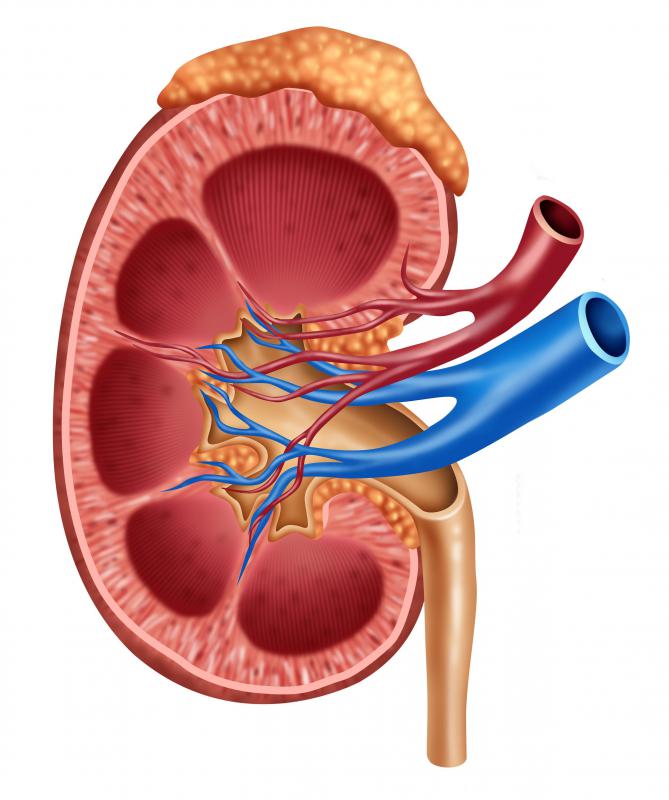At WiseGEEK, we're committed to delivering accurate, trustworthy information. Our expert-authored content is rigorously fact-checked and sourced from credible authorities. Discover how we uphold the highest standards in providing you with reliable knowledge.
What is an Overactive Adrenal Gland?
The adrenal glands are small hormone-producing glands that sit on top of each kidney. An overactive adrenal gland produces too much of one or more of these hormones. This can lead to symptoms such as fatigue, high blood sugar, and body changes. Treatment for an overactive adrenal gland may include the use of prescription medications or surgical removal of the adrenal gland.
The adrenal glands are responsible for producing hormones known as corticosteroids. These hormones have many functions, including assisting in stress management and helping to prevent inflammation in the body. An overactive adrenal gland may be caused by a variety of medical conditions, including the presence of a tumor. Any bothersome symptoms should be reported to a doctor for further evaluation and possible testing.

Symptoms of an overactive adrenal gland vary widely from patient to patient. Some of the more common symptoms include moderate to severe fatigue, acne, and becoming easily bruised. High blood sugar, anxiety, and irritability may also occur. Body changes frequently develop over time and may include the development of a round face, increased fat in the neck area, and obesity in the upper area of the body. Women may experience menstrual irregularities, while men may notice a decrease in sex drive and fertility.

Additional symptoms of an overactive adrenal gland may include darkened areas of skin on various parts of the body due to increased pigmentation, or thinning of the arms or legs may begin to occur. Some patients may develop dark red or purple stretch marks, especially around the breasts, abdomen, or buttocks. Women may begin to notice an increase in body hair, including facial hair.
Obtaining an accurate diagnosis of an overactive adrenal gland may take a little time, as several medical tests are sometimes needed in order to confirm the suspected diagnosis. The doctor will first take a detailed medical history and ask about any symptoms. Additional tests may then be ordered. Some of the tests commonly used to diagnose an overactive adrenal gland include x-rays, CT scans, and urine tests.
Treatment options for an overactive adrenal gland vary for each patient but may include the use of prescription medications or surgical intervention. Steroid medications may be used in some cases in an effort to reduce troublesome symptoms. Other medications may be used to treat specific symptoms. In other cases, especially if a tumor is present, the adrenal gland may need to be completely removed.
AS FEATURED ON:
AS FEATURED ON:












Discuss this Article
Post your comments